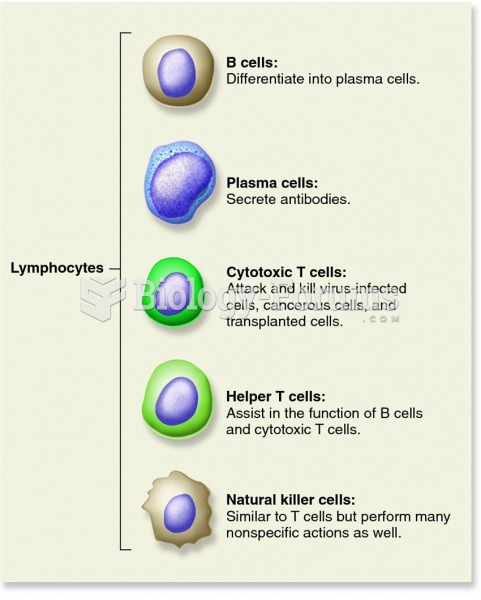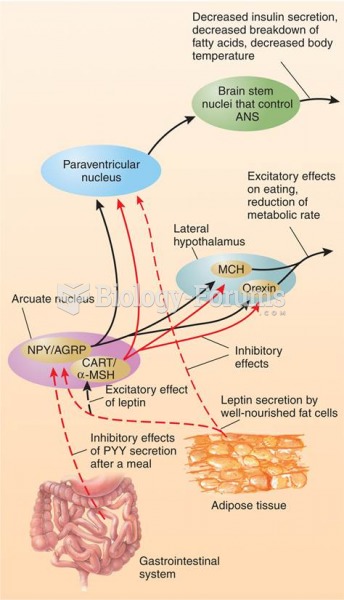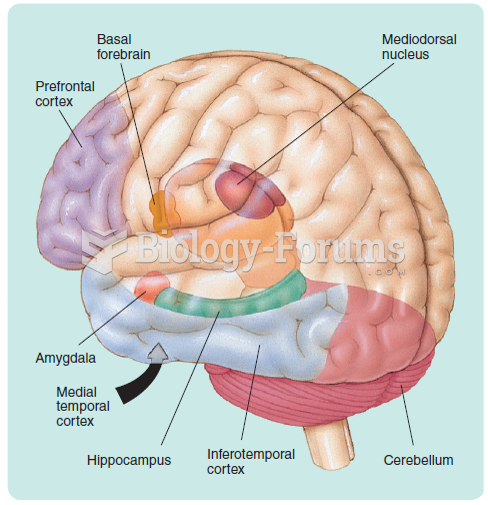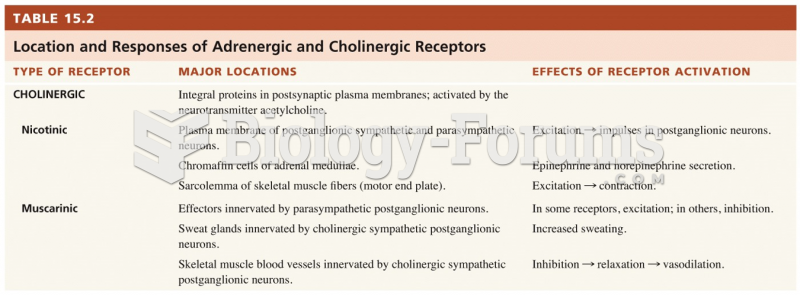|
|
|
This year, an estimated 1.4 million Americans will have a new or recurrent heart attack.
Asthma-like symptoms were first recorded about 3,500 years ago in Egypt. The first manuscript specifically written about asthma was in the year 1190, describing a condition characterized by sudden breathlessness. The treatments listed in this manuscript include chicken soup, herbs, and sexual abstinence.
Eat fiber! A diet high in fiber can help lower cholesterol levels by as much as 10%.
People about to have surgery must tell their health care providers about all supplements they take.
Elderly adults are at greatest risk of stroke and myocardial infarction and have the most to gain from prophylaxis. Patients ages 60 to 80 years with blood pressures above 160/90 mm Hg should benefit from antihypertensive treatment.







